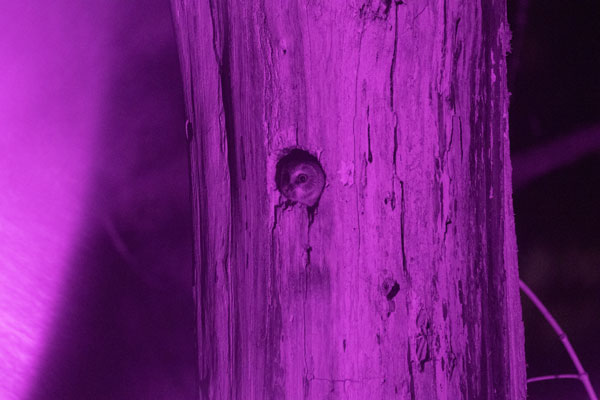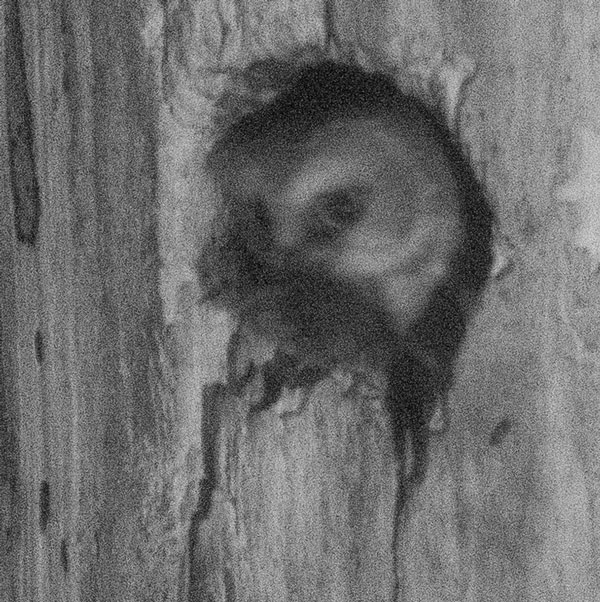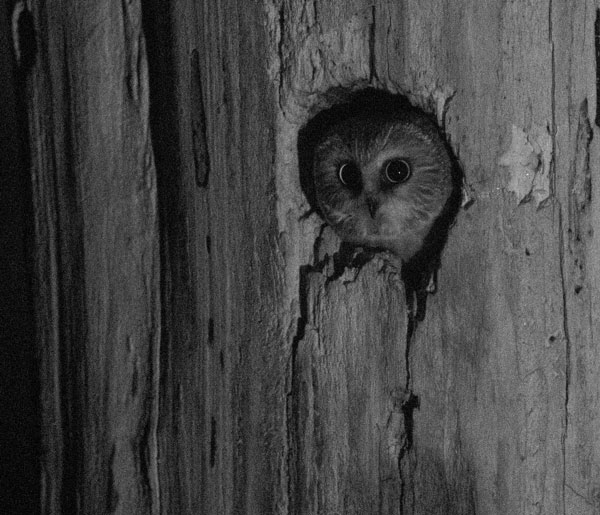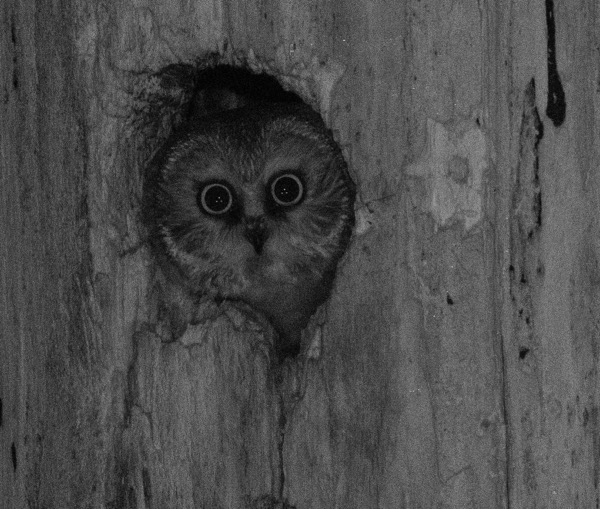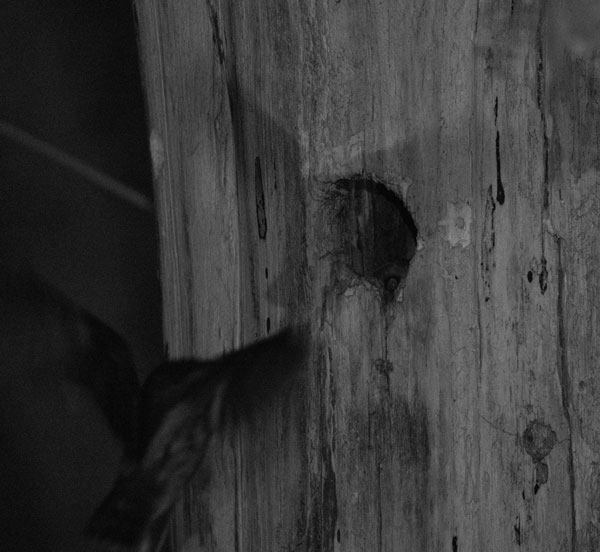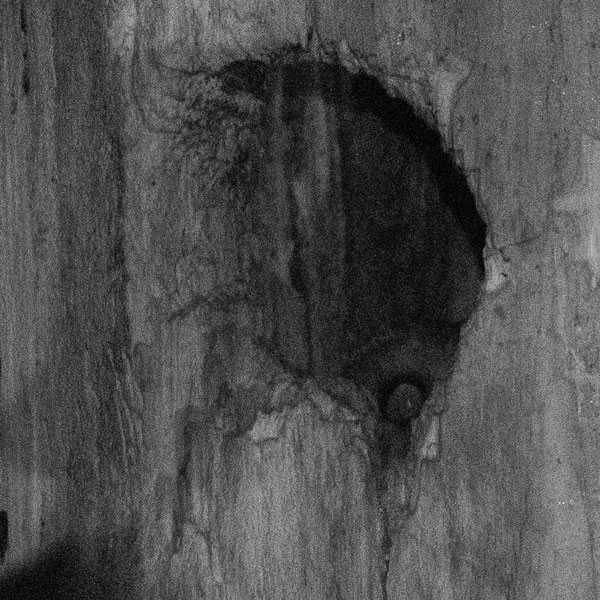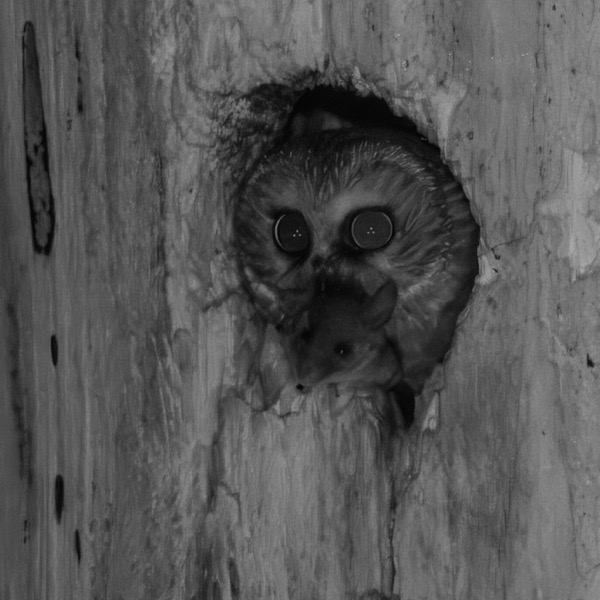|
Northern Saw-whet Owls
Infrared Photography
To take better photos at night, we need to get more light on the subject and into the camera. We don't want to disturb the owls, so the best way to do this is to use infrared (IR) light. That requires modifying a camera to be sensitive to IR. We had LifePixel convert a Canon EOS R6 Mark II to full spectrum so we could use it for nighttime IR photography. See the IR photography section of the how-to page for more about that.
To light up the scene, we used an 8-watt IR LED light panel.
Tom first thought the light streak on the left in the photo above was an unexpected IR source from the house, but it's actually something inside the lens that emits IR. That is not an issue when there is an IR filter over the sensor, but here it is a problem. We have an older EF 100-400mm f/4.5-5.6 that doesn't have the internal IR source, and it's a faster lens than the 100-500mm, so we switched to that.
The IR image below is converted to black and white, and cropped. It's still grainy from the high ISO and perhaps blurred from motion despite the somewhat improved shutter speed.
With the IR photography showing great promise, we headed back to Glazer's to rent the 600mm f/4. The folks at Glazer's support IR photography by renting IR-converted cameras, but didn't have information on IR compatibility for their rental lenses. It is a bit tricky since what counts as compatible varies with what you're doing with it, and our nighttime application is very sensitive to internal IR sources. They had both the older EF and newer RF version of the 600mm f/4 lens available and we arranged for Tom to drop by and test them. Both lenses passed our test. We rented the RF version, which has the same optics as the EF and works on the newer mirrorless cameras without an adapter.
The IR was definitely improving the quality of our night photos, with shutter speeds well under a second, but that just made us want more. We ordered another IR light panel, this time a 10-watt model. Slightly more than doubling the IR improved light into the camera by an f-stop, meaning we could cut the shutter speed or ISO in half. That was helpful, but it motivated us to look for options other than continuing to double the number of light panels. While we were scheming, we added a third light panel placed higher to reduce shadows from the two mounted at ground level.
Next we discovered that our windows, which appear transparent in visible light, actually block about 80% of IR light. That's awesome for energy efficiency in the summer, but terrible for IR photography. To solve that issue, we built an owl blind into the window so we could open the window. That helped the optics and let much more light into the camera, which greatly improved the quality of the images.
Right away, we captured something new and in fact completely unique in our experience: an owl in flight headed in while being watched by another adult owl inside the nest. At the bottom of the opening, there is one eye of another owl visible. (It may be difficult to spot, click on the image for a higher resolution version or see the inset photo that follows.) Previously, any photos of the owl in flight were just a blurry mess where maybe it was possible to tell if it was coming or going. The increased light improving the shutter speed was making a big difference.
Here's a close-up of the owl in the nest.
Later that night, we got our best photo of an owl displaying a mouse. This one is cleaned up a bit in Topaz AI to reduce the noise from the high ISO.
With shutter speeds well under 1/30, we could even shoot video at night. That completed the big tech changes for overnight photography. It's fortunate we had a month and a half to figure out how to take photos at night, just in time for the owlets to appear.
Next Up: Owlets |
|
|
©1996-2025 Tom and Cathy Saxton. You may not copy or reproduce any content from this site without our consent.
